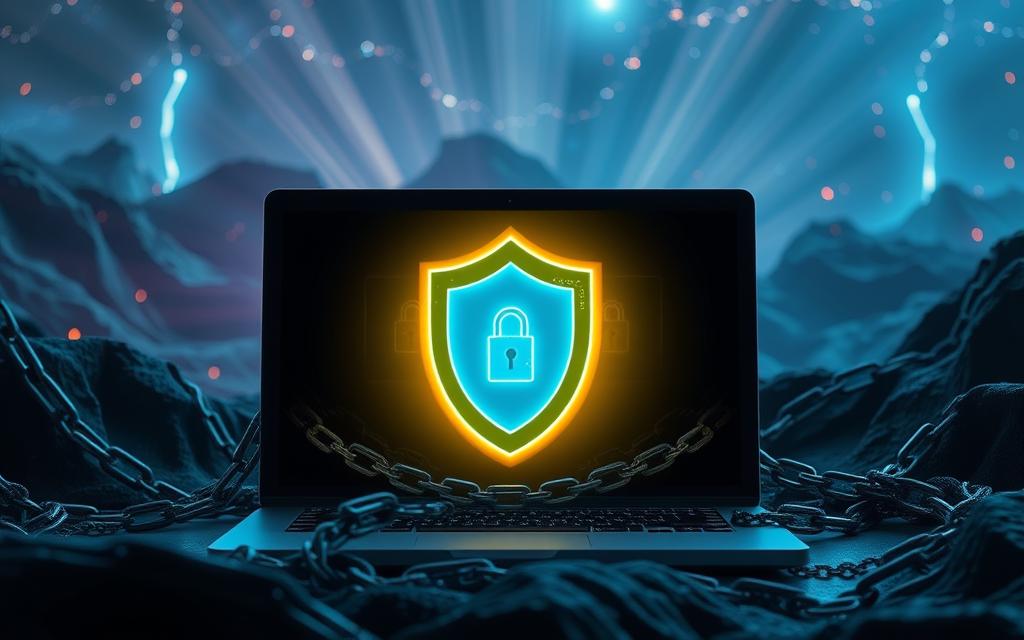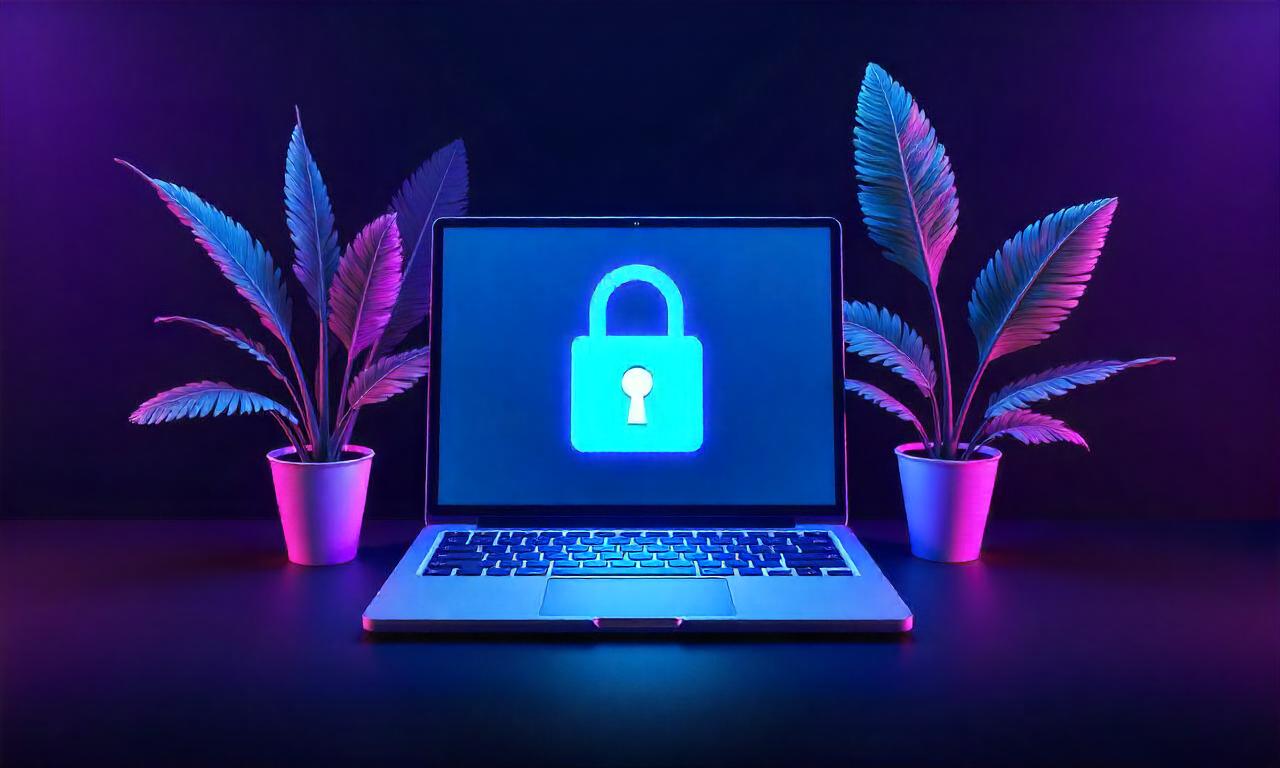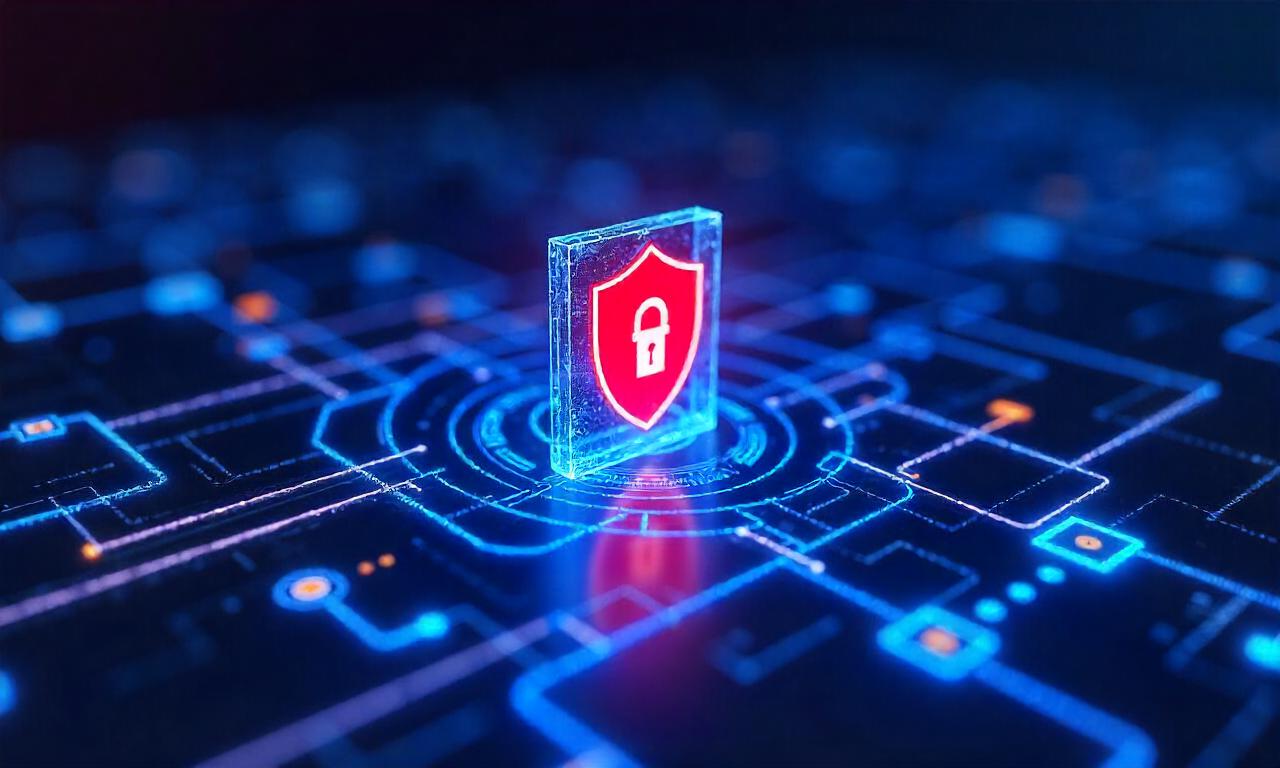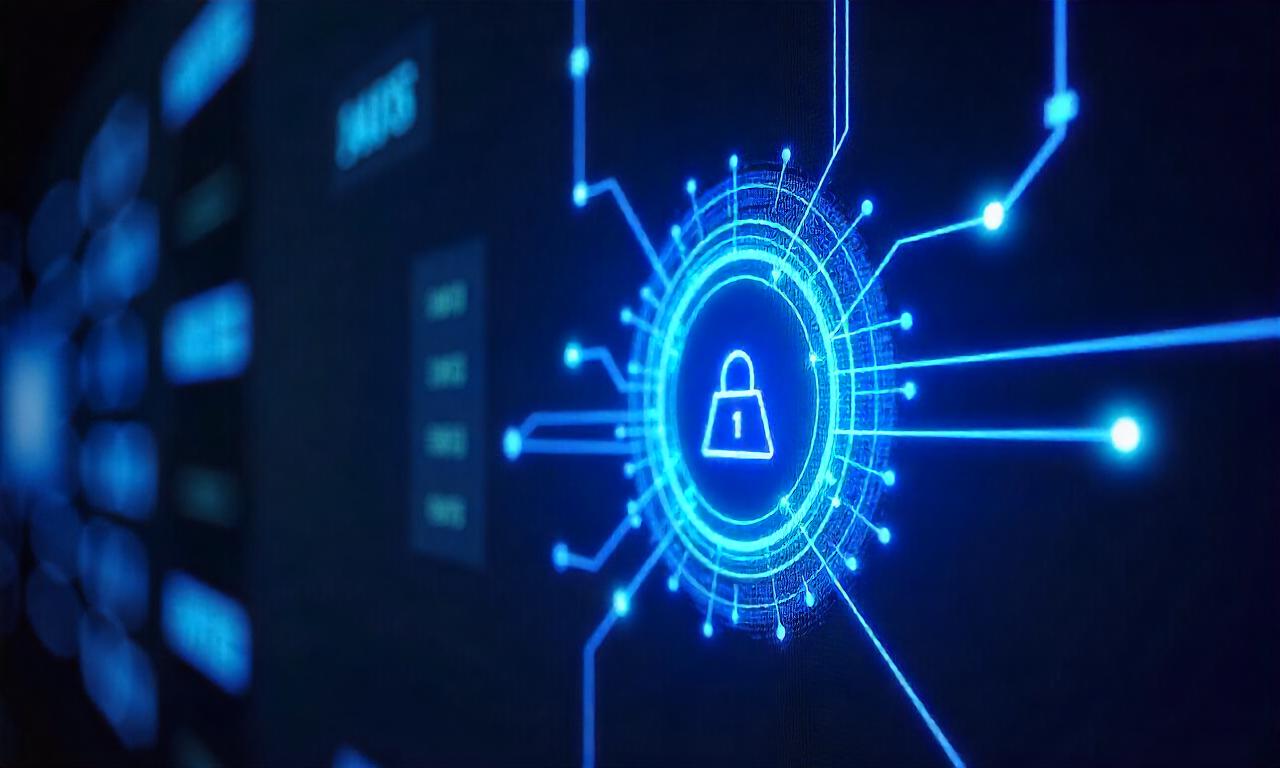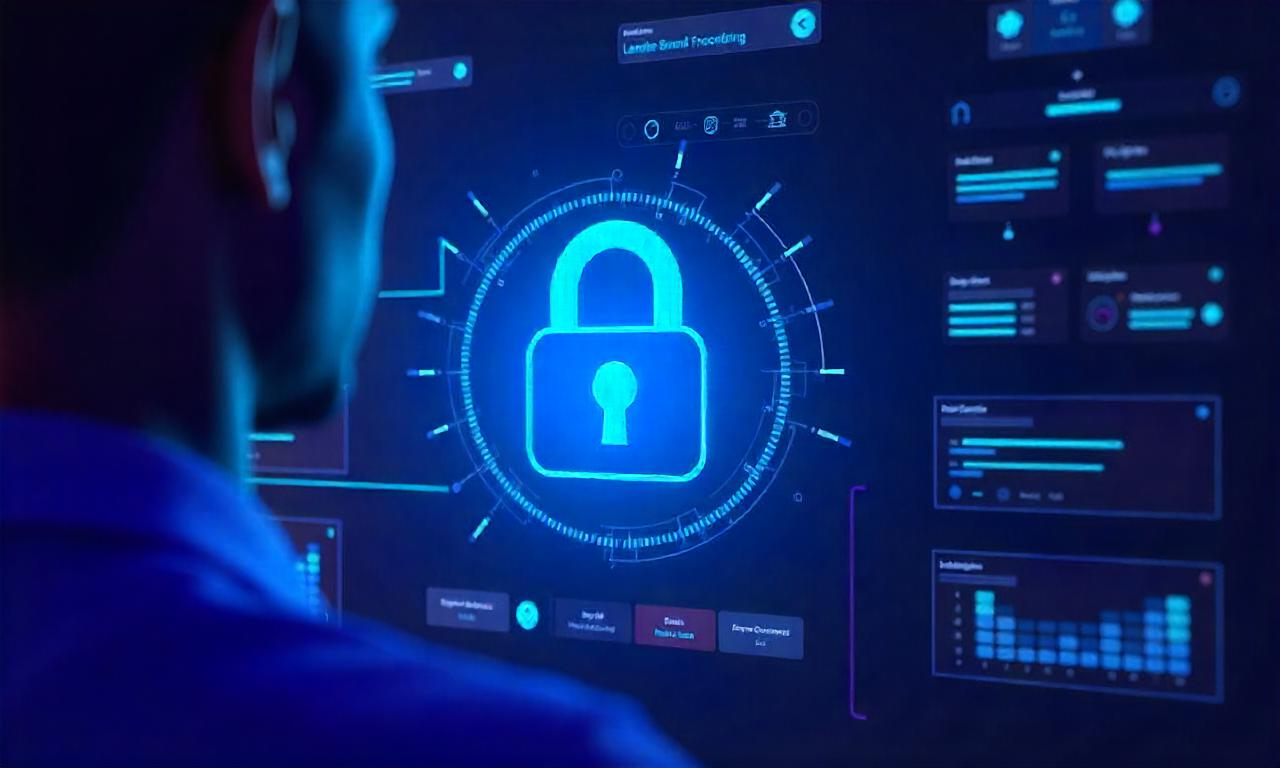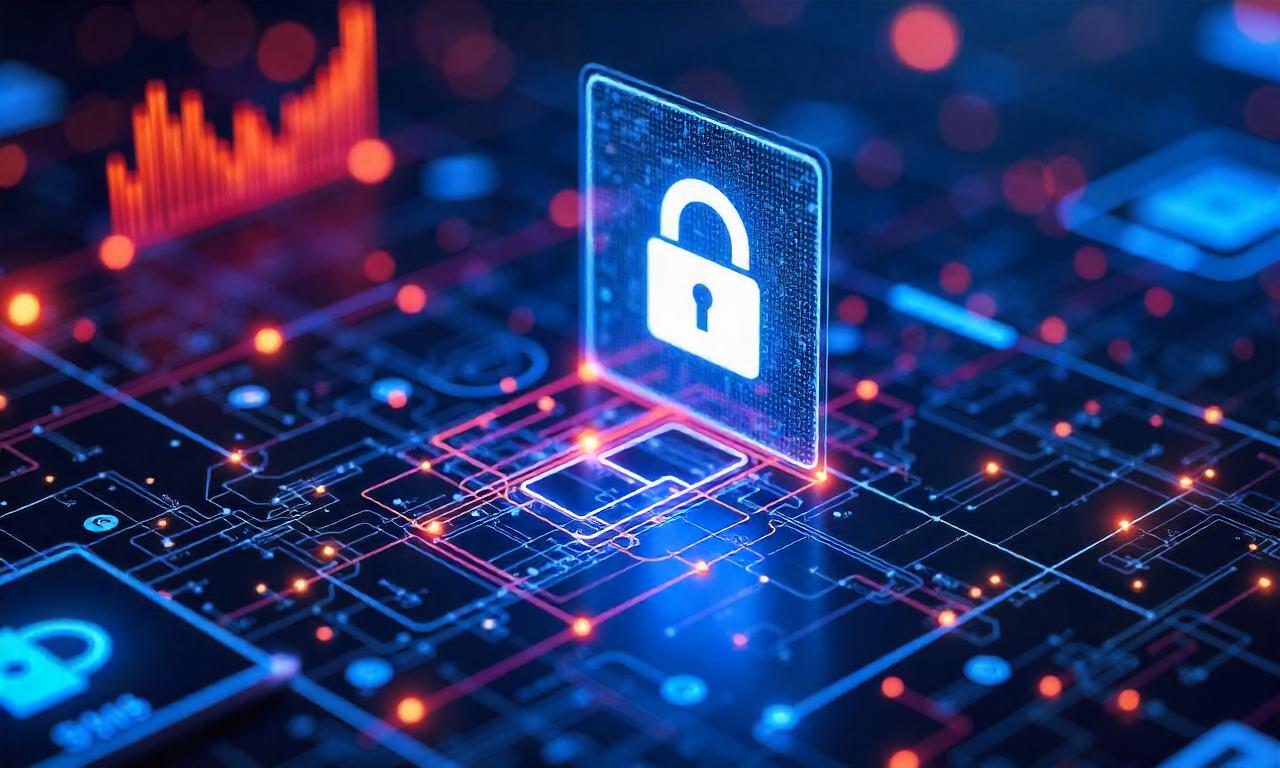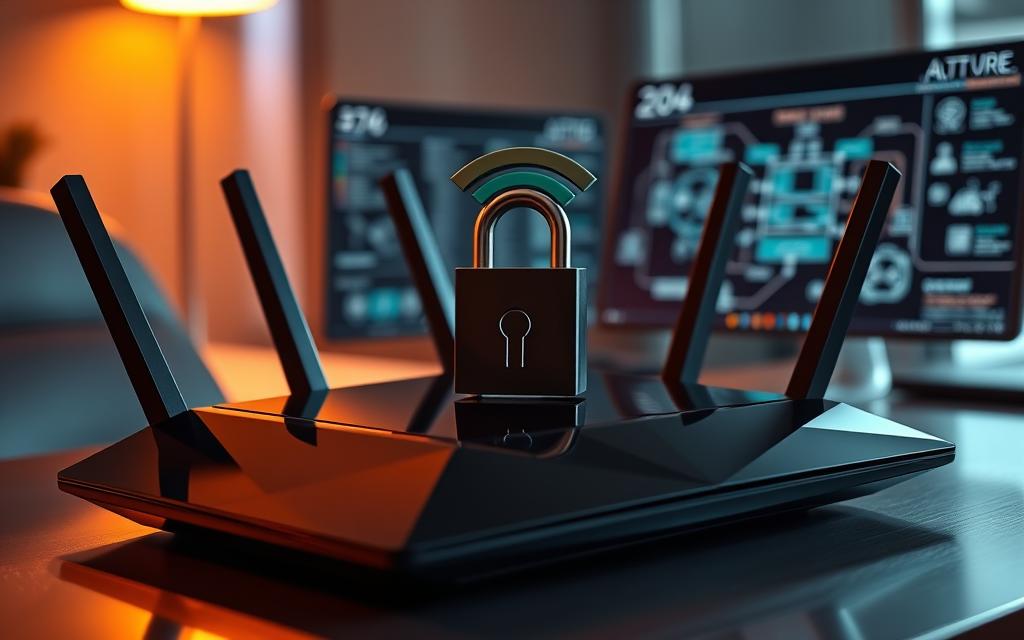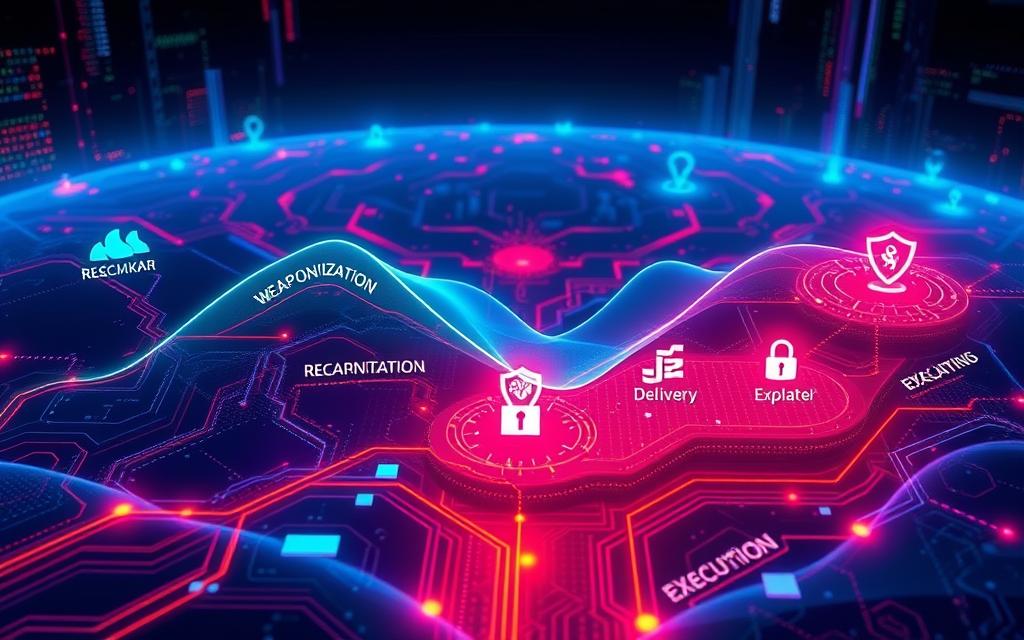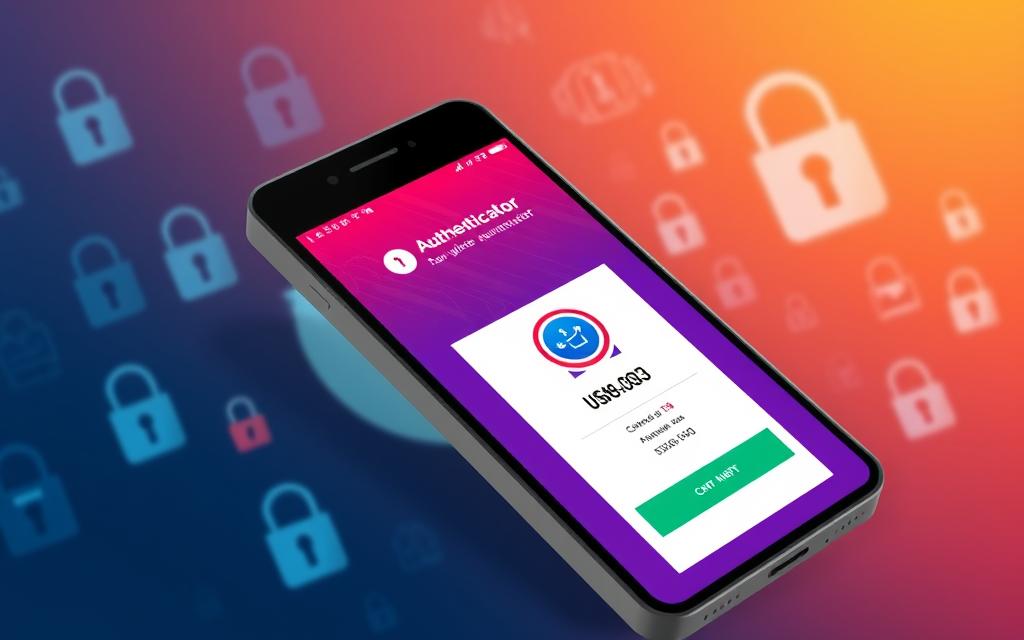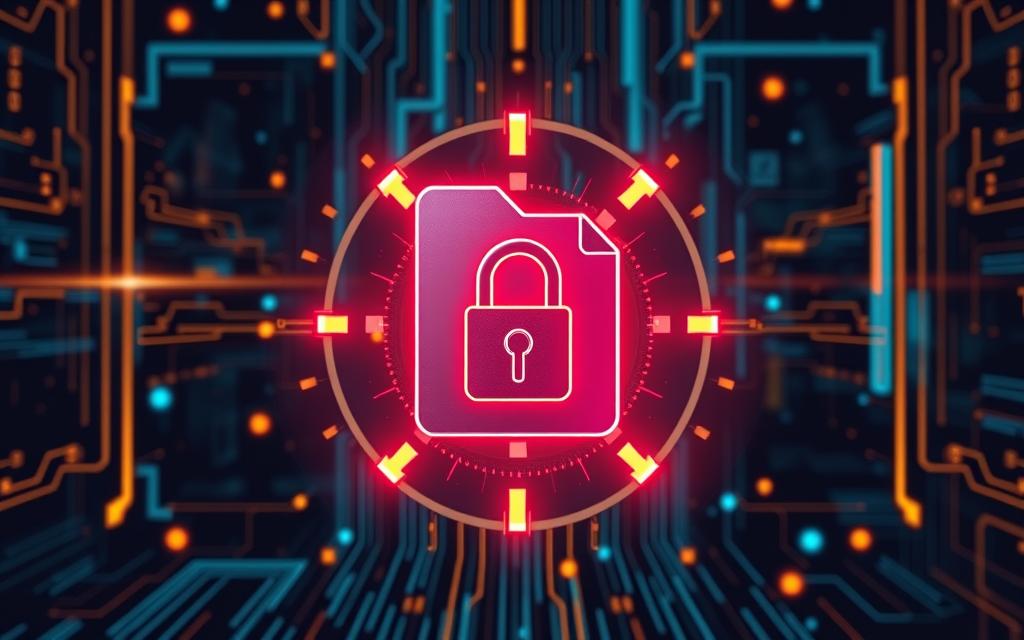Learn how to decrypt files encrypted by ransomware with expert tips and tools to recover your data, enhance security, and prevent future attacks.
Ever thought about getting your data back after a ransomware attack without paying the hackers? Ransomware attacks are becoming more common, making us worry about our digital safety. This guide will help you understand how to recover your data and restore encrypted files.
Dealing with ransomware can be scary, but our guide offers clear steps to get your files back. We’ll cover everything from what ransomware is to how to prevent future attacks. Let’s explore how to keep your data safe.
Table of Contents
ToggleUnderstanding Ransomware and Its Impact
Ransomware is a harmful *malware type* that hurts both individuals and businesses. It locks systems or data until a ransom is paid. This raises big worries about *cyber attack consequences* in today’s digital world.
What is Ransomware?
Ransomware is a bad software that blocks access to computers or data until money is paid. It encrypts files or locks users out, asking for money in cryptocurrencies like Bitcoin. This makes it hard to track the attackers.
Ransomware spreads through emails, links, or software bugs. It’s a big cyber threat today.
Types of Ransomware
There are many *malware types* of ransomware that threaten users and businesses:
- Crypto Ransomware: Encrypts files and demands payment for the decryption key.
- Locker Ransomware: Locks the whole system, stopping all access.
- Scareware: Shows fake alerts and asks for money to fix problems.
- Doxware: Threatens to share stolen data unless a ransom is paid.
New types like double extortion ransomware are coming up. They make the *ransomware effects* worse for victims.
Impact on Individuals and Businesses
The *cyber attack consequences* of ransomware are severe:
| Impact | Details |
|---|---|
| Financial Loss | Payment of ransom, lost revenue, and recovery costs can hurt finances. |
| Data Breach | Lost or compromised sensitive data, affecting personal and corporate info. |
| Cost of Downtime | Operational disruption leading to productivity loss and damaged reputation. |
It’s key to know about ransomware and have strong plans to fight it.
Identifying the Ransomware Variant
It’s key to know which ransomware variant has encrypted your files to fight it well. By following certain steps, we can spot ransomware quickly. This helps us use the right countermeasures for each strain.
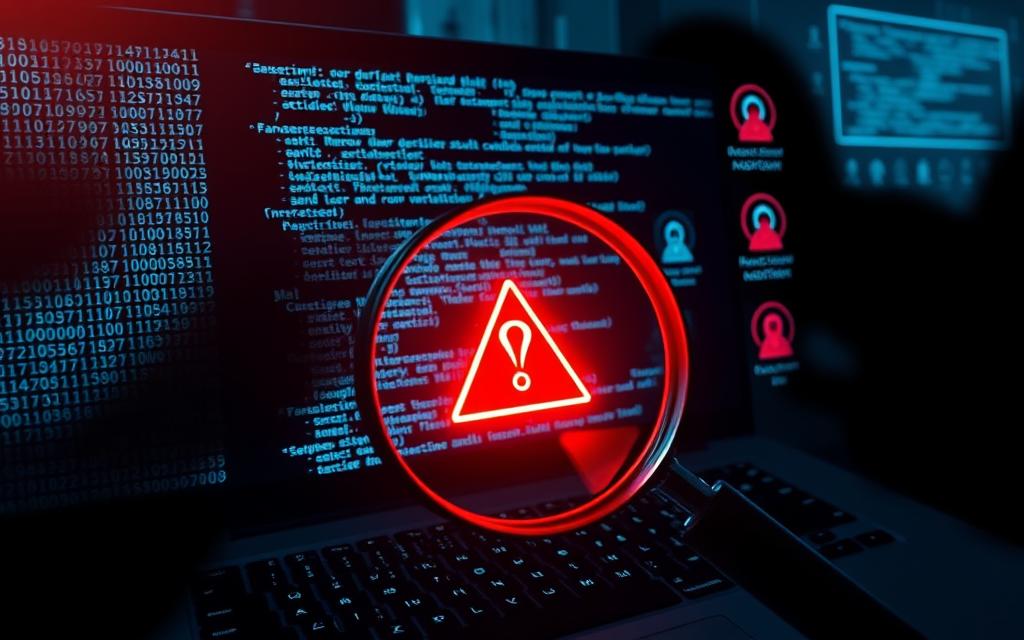
First, pay attention to any ransom notes on your devices. These notes often give clues about the ransomware. Look for names like “CryptoLocker” or “WannaCry” in these messages.
Also, use special tools and services for malware analysis. Sites like ID Ransomware let us upload ransom notes or encrypted files.
This helps us figure out the ransomware variant. Knowing this tells us if we can use decryption tools or if we need other recovery steps.
Another important thing is to look at file extensions on encrypted files. Many ransomware types add unique extensions. For example, Locky ransomware uses “.locky” extensions.
Let’s look at some well-known ransomware strains:
| Ransomware Strain | Common Indicators | Tools for Identification |
|---|---|---|
| CryptoLocker | Ransom note titled “DECRYPT_INSTRUCTION.TXT”, “.encrypted” file extension | ID Ransomware, MalwareHunterTeam |
| WannaCry | Ransom message in multiple languages, “.wncry” file extension | ID Ransomware, NoMoreRansom |
| Locky | “.locky” or “.zepto” file extension, ransom note titled “_Locky_recover_instructions.txt” | Malwarebytes, ID Ransomware |
| Maze | Ransom note “DECRYPT-FILES.txt”, files with random filename extension | Trend Micro, ID Ransomware |
Knowing these signs and using tools for ransomware identification helps us fight ransomware better. By identifying the specific strain, we can use the right decryption methods. This way, we can lessen the threat and get our data back.
Initial Steps After a Ransomware Attack
When a ransomware attack happens, quick actions are key. A well-thought-out ransomware response strategy can lessen the damage. Here’s what to do first when you spot a ransomware attack.
Disconnect from the Network
Start by cutting off the infected systems from the network. This step stops the ransomware from spreading. It’s a vital part of any security breach protocol.
Do Not Pay the Ransom
Don’t pay the ransom. There’s no guarantee your files will be back. It also might lead to more attacks. Focus on a good ransomware response strategy instead.
Contact Authorities and Experts
Report the cyber attack to the FBI Cyber Division right away. They offer important help and advice. Also, talking to cybersecurity experts can help figure out the best steps. They’ll follow your security breach protocol.
Using Decryption Tools from Trusted Sources
When you face a ransomware challenge, finding reliable tools is key. Knowing where to find good decryption software and how to check if it’s legit can save you time and money. It’s also important to decide between free and paid tools based on your needs.
Where to Find Decryption Tools
There are many trusted places to find decryption tools. The FBI and Europol often suggest tools. NoMoreRansom.org, a joint effort by many, has lots of options. Cybersecurity forums are also great for finding top-notch tools.
How to Verify the Legitimacy of Decryption Tools
Make sure the tools you choose are real. Look for endorsements from known cybersecurity groups. Reading reviews from trusted blogs and forums can help too. Tools backed by many credible sources are safer to use.
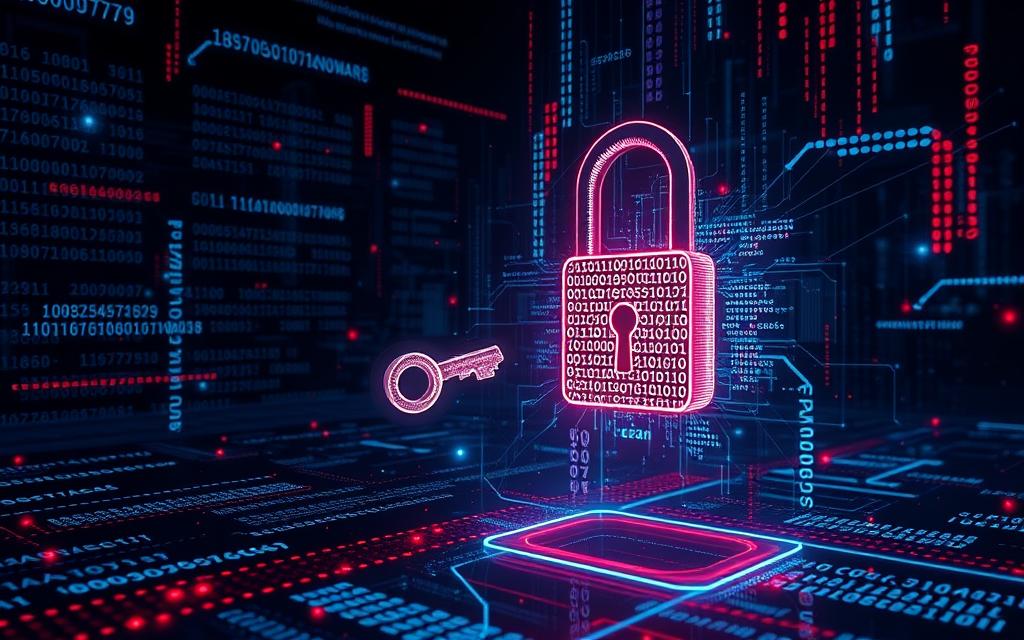
Using Free vs. Paid Decryption Tools
Choosing between free and paid tools depends on several things. Free tools are free and a good start, but might not work for all ransomware. Paid tools cost more but offer better support and are more likely to work. Think about how serious your problem is and what tools can solve it.
| Factors | Free Tools | Paid Tools |
|---|---|---|
| Cost | Free | Varies |
| Support | Limited or None | Comprehensive |
| Coverage | Basic | Extensive |
| Legitimacy Verification | Depends on Source | Usually Verified |
Restoring Files from Backups
Having good data backup solutions is key when facing a ransomware attack. Regular backups protect your files and speed up the recovery process. It’s important to understand the value of backups and how to restore files to keep your data safe and accessible.
Importance of Regular Backups
Regular backups are a crucial part of a solid backup strategy. They act as a safety net, letting us quickly recover files without paying ransom. By regularly backing up, you lower the risk of losing data and keep your business or personal life running smoothly.
- Protects against data breaches
- Facilitates quick recovery after an attack
- Ensures data availability and integrity
How to Restore from Backups
Restoring files from backups is easy if you have a good backup plan. Here’s a simple guide to help you get your files back:
- Find and separate the clean backup data.
- Disconnect infected systems from the network to stop the ransomware spread.
- Do a full system scan to remove any malware.
- Use your backup software to pick the latest backup.
- Start the restoration process, following your software’s instructions.
- Check the restored files to make sure they’re safe and complete.
It’s vital to keep your backup data safe and separate from your main systems to avoid ransomware infection. By following these backup strategies, you ensure your recovery options are reliable and secure.
| Backup Frequency | Advantages |
|---|---|
| Daily Backups | Ensures minimal data loss, best for dynamic environments with frequent changes |
| Weekly Backups | Balances workload and recovery needs, suitable for stable environments |
| Monthly Backups | Cost-effective for archives or infrequently updated data |
How to Decrypt Files Encrypted by Ransomware
Getting your files back after ransomware can seem tough. But, with the right steps, you can beat encryption and unlock your files. We’ll cover the steps, tools, and resources you need. We’ll also talk about common challenges and how to solve them.
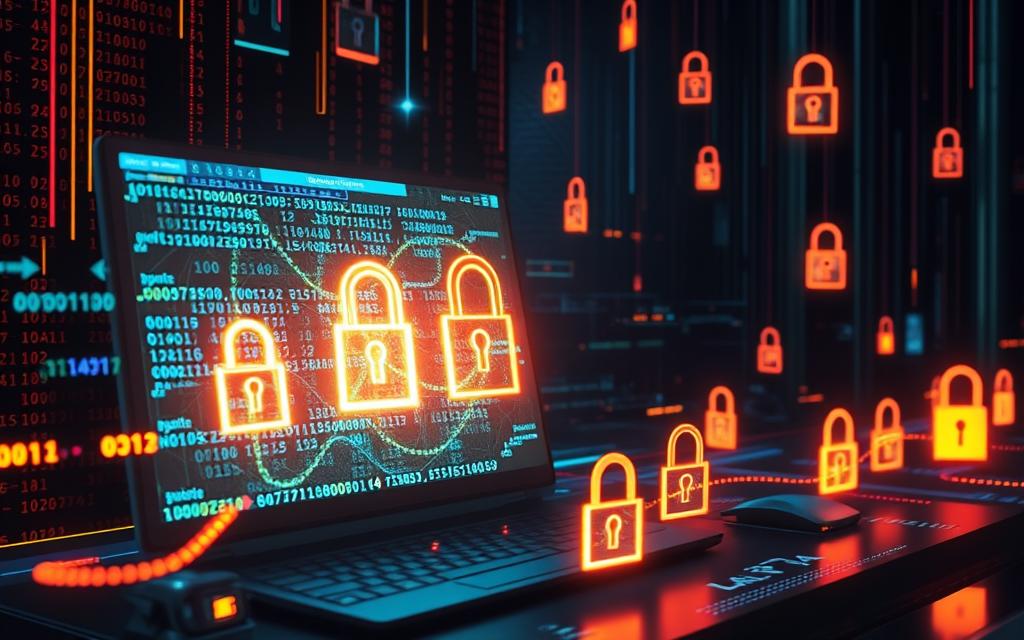
Step-by-Step Decryption Process
To decrypt your files, follow these steps carefully:
- First, figure out what kind of ransomware you have.
- Then, find a decryption tool made for that ransomware.
- Next, download the tool from a safe place.
- Turn off your antivirus to avoid problems during decryption.
- Run the tool and follow the instructions on your screen.
- After decryption, check if your files are working right.
- Lastly, turn your antivirus back on and scan your system.
Tools and Resources Needed
Here are the tools and resources you’ll need for successful decryption:
- Decryption Software: Use tools like Emsisoft Decryptor, Kaspersky RakhniDecryptor, and Avast’s Free Ransomware Decryption Tools.
- Technical Support: Get help from cybersecurity experts at Norton or Symantec.
- Backup Solutions: Use services like Carbonite, Backblaze, or external hard drives for backup.
Potential Challenges and Solutions
When decrypting, you might face some challenges. Here are some common problems and how to fix them:
One big challenge is dealing with damaged files during decryption. Always have a backup ready for important data. Another problem is when there’s no decryption tool for new ransomware.
In these cases, get professional help or use advanced data recovery services. Keeping your security up to date can also help prevent future problems.
Using Advanced Recovery Software
In cases where normal decryption tools don’t work, advanced recovery software can help. This section will look at top recovery software, how to use it, and its pros and cons.
Top Recovery Software Options
There are several great options for file recovery programs:
- Recuva: It’s easy to use and has strong data recovery features, making it a favorite among users.
- EaseUS Data Recovery Wizard: It’s known for its advanced decryption and wide compatibility.
- Stellar Data Recovery: Stellar has a wide range of features, making it great for tough file recovery jobs.
How to Use Advanced Recovery Software
Using advanced recovery software involves a few key steps for the best results:
- First, download and install the software from a reliable source.
- Then, start a system scan to find encrypted files.
- Next, follow the prompts to start the recovery process.
- Lastly, check the recovered files and save them safely.
Pros and Cons of Advanced Recovery Tools
| Pros | Cons |
|---|---|
| They have a high success rate, even with tough file recovery jobs. | They can be pricey, with some tools needing a subscription. |
| Their user-friendly interfaces make recovery easier. | They might use a lot of system resources, slowing down your computer. |
| They use advanced decryption algorithms for better recovery chances. | Not all software can handle every ransomware encryption type. |
Advanced recovery software is a good option when normal decryption methods fail. By learning about these programs and their features, we can better fight against ransomware attacks.
Consulting Cybersecurity Professionals
When a ransomware attack hits, getting help from cybersecurity experts is key. They provide cybersecurity assistance and quickly tackle the problem. This helps stop more damage. Working with ransomware specialists means you get the latest in fighting malware.
Choosing professional malware remediation services gives you a plan made just for your situation. They use tools to find and stop threats fast.
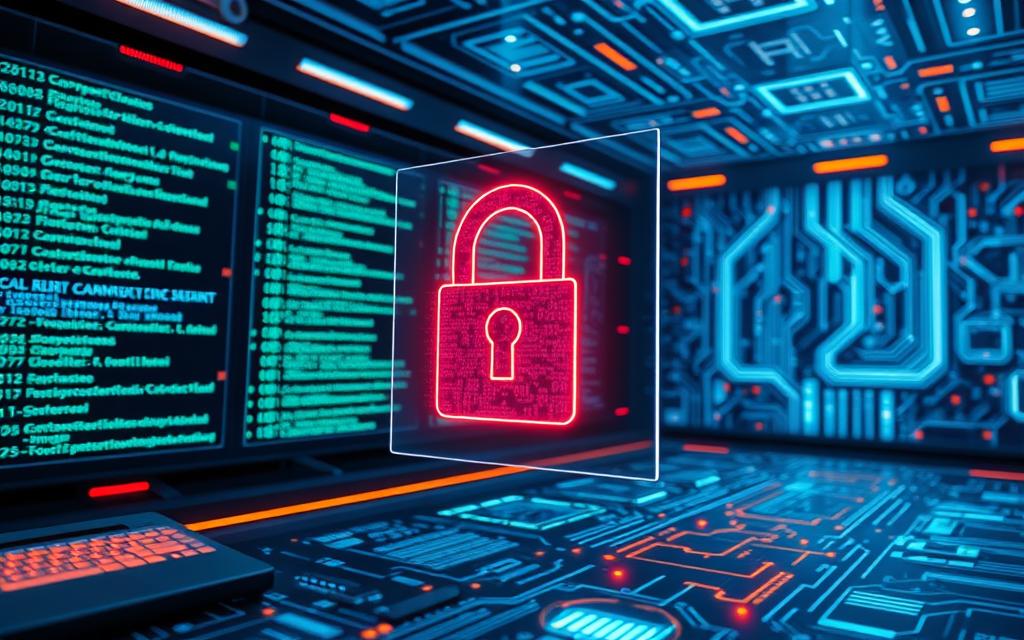
- Experience and Expertise: Find experts with a history in ransomware remediation. Check their credentials and past work.
- Comprehensive Services: Make sure they can do everything from start to finish.
- Customer Testimonials: Look for reviews and success stories to see if they’re good at their job.
Here’s a look at what top cybersecurity firms offer to help you choose:
| Firm | Expertise | Key Services | Customer Rating |
|---|---|---|---|
| Symantec | High | Malware Analysis, Data Recovery, 24/7 Monitoring | 4.8/5 |
| FireEye | Medium | Incident Response, Threat Intelligence, Forensic Investigation | 4.6/5 |
| CrowdStrike | High | Endpoint Protection, Threat Hunting, Cloud Security | 4.9/5 |
Getting help from cybersecurity assistance experts speeds up fixing problems. It also makes your systems stronger against future threats. Their knowledge helps keep our systems safe from new cyber dangers.
Preventing Future Ransomware Attacks
To fight off ransomware, we need strong security plans. These plans should cover both tech and human sides. We must use ransomware prevention methods to boost our cybersecurity.
Implementing Security Measures
It’s key to follow security best practices to protect our systems. Here are some important steps:
- Use strong antivirus software to find and remove malware.
- Hold regular training for employees on phishing and suspicious emails.
- Set up strict access controls and user checks to block unauthorized access.
- Make sure to back up important data often and keep these backups safe.
Regular System Updates
Keeping our systems and software current is crucial for ransomware prevention. Following strict system update policies helps apply security fixes quickly.
Here’s how to do it:
- Turn on automatic updates for software and operating systems to get the latest security fixes.
- Check systems often for outdated software or firmware and update them right away.
| Security Measure | Purpose |
|---|---|
| Antivirus Software | Detect and remove malware threats |
| Employee Training | Educate on phishing and suspicious activity |
| Access Controls | Restrict unauthorized access |
| Data Backups | Securely store critical data |
| Automatic Updates | Apply the latest security patches |
Legal and Ethical Considerations
When dealing with ransomware attacks, we must look at the legal aspects of decryption and the ethical issues. This part talks about the rules and moral challenges businesses face with ransomware. It helps us understand how to handle these problems well.
Legality of Decrypting Ransomware Files
It’s key for businesses to know the legal aspects of decryption. In the U.S., there are laws and rules for dealing with data breaches from ransomware.
They must think if decrypting files themselves is okay and if they must tell authorities or those affected. Following laws like the GDPR for global operations or the CCPA for California is a must to avoid legal trouble.
Ethical Implications for Businesses
Ransomware attacks bring up big ethical questions. One big question is if paying the ransom to get data back is right. While it might seem like a fast fix, it can help cybercrime and illegal activities.
Instead, businesses should use ethical data recovery methods that focus on doing the right thing and following the law.
They also have to protect their clients’ and stakeholders’ data, being open about breaches and working to stop them from happening again.
| Considerations | Legal | Ethical |
|---|---|---|
| Decryption Compliance | Adhere to state and federal laws | Ensure transparent reporting |
| Ransom Payment | Check legal implications | Avoid supporting cybercrime |
| Data Recovery | Comply with regulatory requirements | Prioritize ethical recovery methods |
| Client Notification | Legally required in many cases | Maintain trust and transparency |
Real-life Case Studies on Ransomware Decryption
In this section, we explore real-world ransomware attacks. We look at successful cases and the lessons learned from them.
Successful Decryption Stories
The WannaCry ransomware attack hit thousands of systems globally. Microsoft quickly made a patch. This allowed many to get their files back without paying the ransom.
Another example is the No More Ransom initiative. It’s a team-up between law enforcement and cybersecurity firms. They gave tools that helped victims of GandCrab ransomware get their data back.
Lessons Learned
Looking at these cases, we see how important being ready and acting fast is. Key lessons include keeping software up to date and having offline backups. Also, getting help from trusted sources like No More Ransom is crucial.
These stories also show the power of working together. When organizations collaborate, they can fight ransomware threats more effectively.
Conclusion
As we wrap up our guide on beating ransomware, it’s key to stress the need for action. Knowing the types of ransomware and how to act after an attack helps a lot. Using trusted tools, getting help from cybersecurity experts, and making backups are crucial for getting your data back.
We’ve looked at ways to unlock files held by ransomware. This includes using special tools, restoring backups, and using advanced software. Each method has its own set of problems and solutions. This shows how important it is to be ready and know what to do.
Regular updates and strong security are essential to stop ransomware attacks. Our look at real cases shows how important being ready and quick can be. By keeping up with security news and tools, we can protect our digital world better.
Struggling with ransomware? Visit cybersecarmor.com for trusted guidance on how to decrypt files encrypted by ransomware and regain control of your data today!
FAQ
What is Ransomware?
Ransomware is a type of malware that locks your computer or files until you pay a ransom. It encrypts your data, making it unreadable. Then, it demands money to unlock your files.
What are the types of Ransomware?
There are many types of ransomware. Some, like crypto ransomware, encrypt your files. Others, like locker ransomware, lock you out of your system. New types keep coming, each with its own twist.
How does ransomware impact individuals and businesses?
Ransomware can lead to big financial losses and data breaches. It also causes downtime, which is costly for both people and companies. It’s important to have a strong plan to deal with it.
How can I identify the ransomware variant that has encrypted my files?
To figure out the ransomware type, look for specific signs. Use tools or services for malware analysis. Knowing the type is key to finding the right way to unlock your files.
What should I do immediately after discovering a ransomware attack?
First, cut off the infected system from the network to stop the malware spread. Don’t pay the ransom. Instead, reach out to authorities and cybersecurity experts for help.
Where can I find reliable decryption tools?
You can find good decryption tools from law enforcement and trusted cybersecurity forums. Always check if the tools are safe before using them.
Should I use free or paid decryption tools?
Free tools are cheap but might not offer much support. Paid tools can give better solutions and customer service. It’s up to you to decide based on your needs.
How important are regular backups in ransomware preparedness?
Backups are very important. They let you restore your files from a safe version. This way, you can lessen the damage from ransomware attacks.
What steps are involved in restoring files from backups?
To restore files, pick a clean backup version. Make sure the backup is safe. Then, follow the steps your backup provider gives you.
What is the step-by-step decryption process for encrypted files?
Decryption starts with figuring out the ransomware type. Then, get the right decryption tool. Follow the tool’s instructions carefully to unlock your files. Sometimes, you might face challenges, but there are usually solutions.
What are the potential challenges in the decryption process?
You might face issues like damaged files or tools that don’t work right. Troubleshooting and getting expert advice can help solve these problems.
What are the best advanced recovery software options available?
There are many advanced recovery tools out there. Kaspersky Anti-Ransomware Tool and Bitdefender Ransomware Removal are good examples. They can help when simpler tools fail.
How do I use advanced recovery software?
Each advanced tool has its own instructions. You usually need to install it, scan for malware, and follow the steps to try and recover your files.
What are the pros and cons of advanced recovery tools?
These tools offer strong features and a better chance of recovering your files. But, they can be expensive and hard to use. Think carefully before choosing.
Why should I consult cybersecurity professionals for ransomware attacks?
Cybersecurity experts are skilled in handling ransomware. They can offer specialized help and tailored solutions. This can help minimize damage and get your data back.
How can I prevent future ransomware attacks?
To avoid ransomware, use strong antivirus software. Teach your employees about phishing scams. Use access controls and keep your systems updated to fix vulnerabilities.
Are there legal considerations when decrypting ransomware files?
Yes, there are legal things to think about. Like reporting breaches and following data protection rules. Knowing the law helps you make the right choices during a ransomware attack.
What are the ethical implications for businesses dealing with ransomware?
Businesses face ethical choices, like whether to pay the ransom. This decision affects cybersecurity. They must weigh quick recovery against the risk of encouraging crime.
Can you share real-life case studies of successful ransomware decryption?
There are stories of companies successfully decrypting their files. These tales show the strategies and tools used. They offer valuable lessons for getting better at dealing with ransomware.

